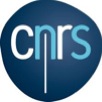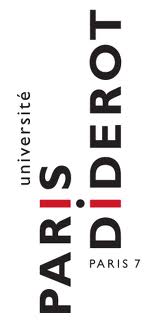research strand
Axe 4
This strand will study language acquisition, both typical and atypical, as well as language decline and recreation, from an experimental and crosslinguistic perspective. The studies will involve 32 members (21 permanent researchers, 4 PostDocs and 7 PhD students) from the two psycholinguistic Paris 5 teams (LPP-P5 and LPNcog) and linguistic teams from Paris 3 and Paris 7. They will be organized into 21 workpackages, with two major substrands.
We will study the acquisition of various aspects of language, in collaboration with phonetic and phonological studies in Strand 1, and morphological, word order and focus studies in Strand 2. The overall goal is to identify the constraints linked to the organization of cortical development implicated in language acquisition, the role of language-general properties, the role of the specific properties of the native language(s), the extent to which interaction constrains the structure of language, and the dynamics of interactions between endogenous constraints of cortical development and environmental input. Several processing levels (auditory, phonological, lexical, syntactic …) and their integration will be studied in spoken as well as in written language processing, applying various behavioral and imaging (ERPs, NIRS, …) techniques. A large range of populations will be studied: typically-developing infants/children (from 6 months to 12 years of age); adults; atypically-developing populations: deaf infants (with/out cochlear implants), infants with developmental disorders (SLI, dyslexia, Williams syndrome…), premature infants.
Concerning phonological development, the acquisition of language-specific phoneme representations will be investigated in the perspective drawn by recent results suggesting that adult speakers exhibit common representations for both consonant and vowel contrasts (Serniclaes & Salinas, accepted). This common representation would be based on fairly complex processes, i.e. mental rotations similar to those evidenced in spatial perception, and might be related to the segmentation of the syllables into phoneme segments. These hypotheses will be tested with behavioural as well as neuro-imaging studies. In parallel, we will explore functional differences that have been found in the use of consonants and vowels in both infancy (Havy & Nazzi, 2009; Nazzi, 2005) and adults (Cutler et al., 2000; Toro et al., 2008), and will explore different possible origins of this functional asymmetry, from birth to adulthood, on a variety of behavioral and brain imaging tasks, and in different languages chosen to contrast on various phonological properties.
We will also pursue a linguistic analysis of the input to children and on early children’s productions, in order to better specify both the input available to infants/children, and to obtain evidence of children’s production abilities to be compared to their comprehension abilities. In this context, corpora will be developed in collaboration with other research teams that will expand existing and widely used corpora, such as the MANULEX lexical database on child-directed written items (Lété, Sprenger-Charolles, Colé, 2004; Peereman, Lété & Sprenger-Charolles, 2007).
Language loss in healthy adults can be identified in different situations (van Els, 1986): Native language (L1) loss in an L1 environment (mostly a consequence of aging), L1 loss in an second language (L2) environment (a consequence of L2 becoming the more dominant language), L2 loss in an L1 environment (lack of L2 use), and loss of L2 in an L2 environment (possibly a consequence of aging). The first three of these will be studied in our projects. Our overall goal is to develop an integrated framework for language acquisition and decline based on the availability / accessibility of linguistic representation and the functioning of cognitive mechanisms such as the automaticity of processing or the inhibition of interfering information (cognitive control). Exposure and practice are playing a central role for both of these components of language ability. They are however not independent: automaticity of processing will increase with higher exposure rates and interference will most likely depend on the ratio of automaticity. Factors like L2 exposure (as well as L1 exposure in aging) cannot easily be manipulated experimentally in human populations. We will therefore complement our empirical studies on human subjects and natural languages with computational models, based symbolic (ACT-R) as well as connectionist paradigms.
The phenomena we will be working on are closely related to those described for studies on adult monolingual speakers in Strand 2 (e.g., word order phenomena and anaphor resolution). Although we will concentrate our work on well-studied languages during the first few years of the project, we are planning to extend our work to a selection of the variety of languages studied. Formal descriptions of the languages, detailed corpus analyses in order to estimate input frequency, as well as fine grained psychological experimentation will be central to our work. As an extension and integrated with to the psycholinguistic work on L2 acquisition, the study of creole languages formation from a L2 perspective will be one of the innovative approaches developed here.
OLA : Oral language acquisition
-
OLA1-OLA2 Modelization of speech perception processes and early word learning (resp. T. Nazzi, B New) LPP-P5, Lpncog/Memcog
-
OLA3 Early acquisition of word order properties (resp. J. Gervain, C. Soares) LPP-P5, LLF
-
OLA4 New evidence of French-learning infants’ sensitivity to irregular subject-verb agreement at 18 months (resp. T. Nazzi) LPP-P5, LLF
-
OLA5 The acquisition of focus in a cross-linguistic perspective (resp. J. Gervain) LPP-P5, LLF
-
OLA8 Non sentential utterances in child and adult speech (resp. J. Ginzburg) LLF, Alpage
WLA : Written language acquisition (resp. L. Sprenger Charolles)
-
WLA3 The usage of morphological information for learning the spelling of new words (resp. S. Pacton) Lpncog/Mem-cog, LLF, Alpage
-
WLA4 Success and failures in reading acquisition (resp. L. Sprenger-Charolles) LPP-P5, Lpncog/Memcog
-
WLA5 Training study and Development of tools for research and for teaching (resp. L. Sprenger-Charolles) LPP-P5, Lpncog/Memcog
AA : Atypical language acquisition
-
AA4 Relationship between written (dyslexia) and oral (SLI) specific language impairments (resp. L. Sprenger Charolles) LPP-P5, LLF
LD : Language interference and decline
-
LD1 Cognitive control, aging, and Parkinson’s disease (resp. B. Hemforth, P. Piolino) Lpncog/Memcog, LLF
- LD3 Emergence and morphosyntax of creole languages (resp. O. Bonami, A. Kihm) LLF, LPP3










